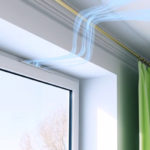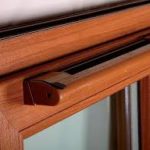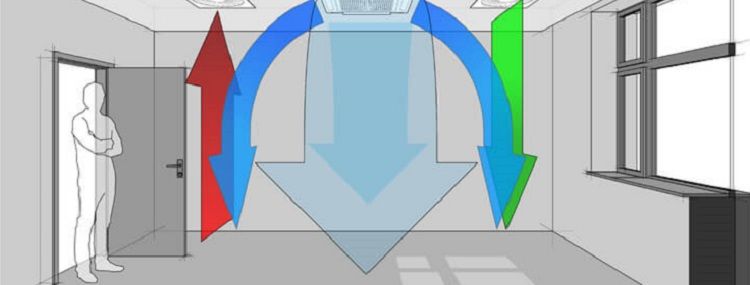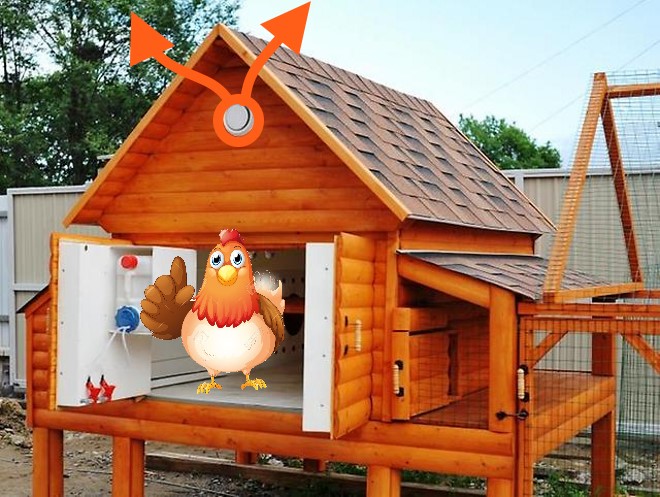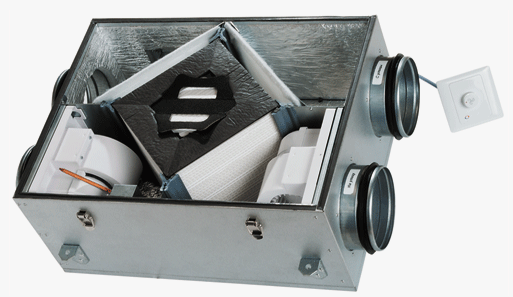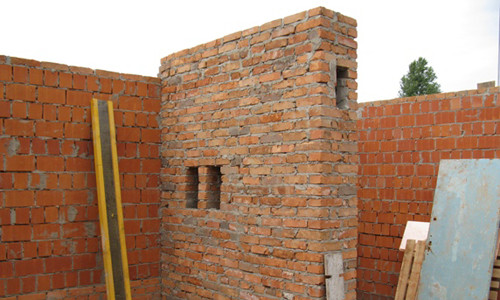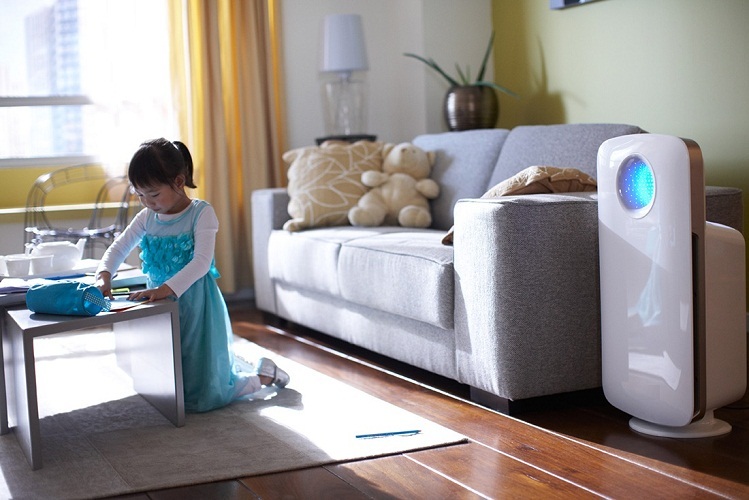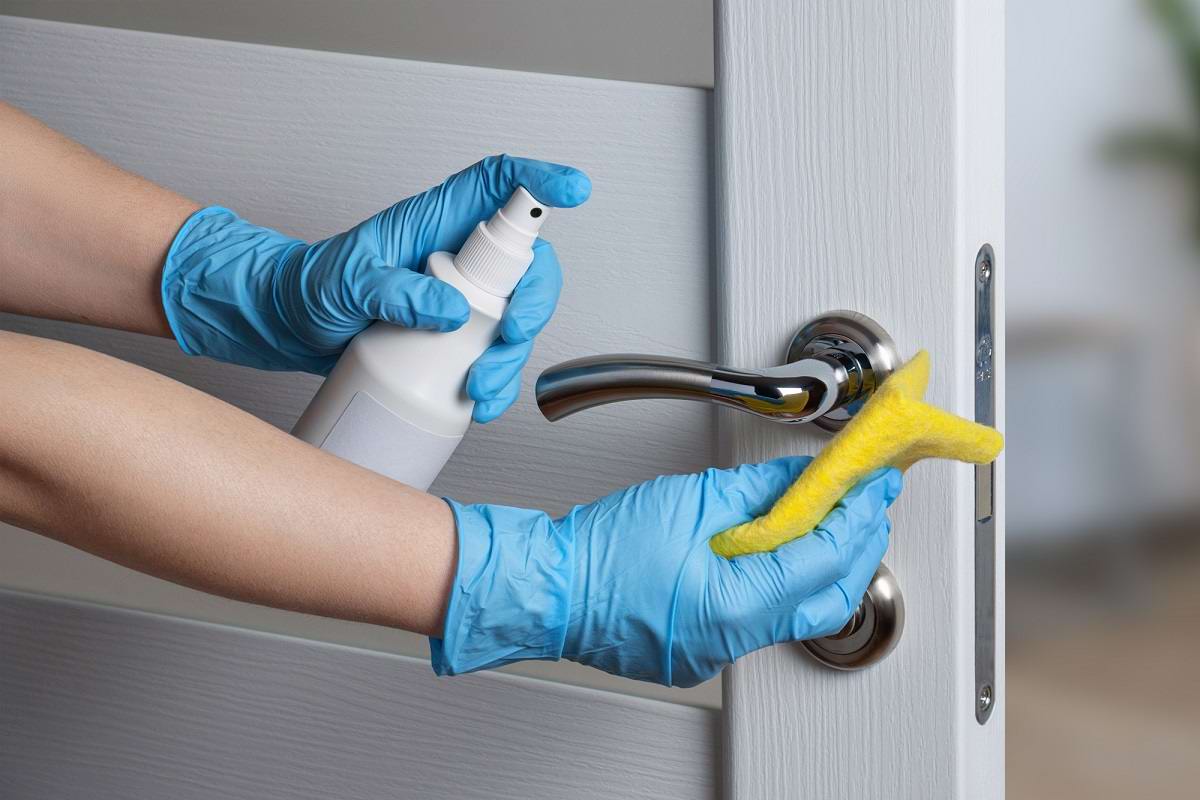The installation of double-glazed windows was not foreseen in the construction of houses with wooden windows. Fresh air entered the room through the cracks. Modern metal-plastic window structures do not allow air to pass through, therefore air exchange is disrupted, ventilation after the installation of new windows is often absent. To address this issue, a supply valve was invented. It is necessary for the supply of fresh air. At the same time, the ventilator prevents significant heat loss and noise penetration into the room.
Feasibility of using a supply valve
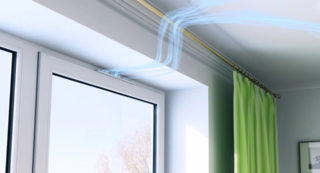
The air in the room, according to sanitary standards, must be constantly replaced: dirty air must be removed through the hood, and fresh air must enter through specially made openings. Then the tenants will not experience problems with breathing, humidity, and often get sick. Houses with traditional window frames did not require air inlets because the air passed through the cracks. In sealed metal-plastic structures, a seal is installed that protects against noise, retains heat, but at the same time prevents the normal functioning of the ventilation system.
Fresh air masses come in with simple ventilation, however, this method has a number of disadvantages:
- when the window is closed, ventilation is not carried out;
- if it is cold outside, when airing, heat leaves the apartment;
- the volume of supply air cannot be controlled in any way - the flow is uneven, drafts occur.
Manufacturers are aware of the drawback and manufacture fittings that solve this problem - supply valves.
Device and principle of operation
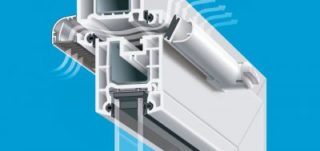
The ventilator operates by pressure drop and natural draft. Therefore, the exhaust ventilation must be active, otherwise the installation of the supply valve on a plastic window will not bring significant benefits.
The valve consists of the following elements:
- air intake - located from the street, protected from insects and precipitation by structural elements;
- channel - a tube installed in a window frame hole made during installation; air enters through this channel;
- outlet block - an element on the side of the room, equipped with a filter, a nozzle and a control valve.
Under the influence of natural draft, the fresh air mass enters through the opening in the frame. The cold stream collides with the rising air mass from the heating system located under the window, under the influence of heat rises to the ceiling and mixes.
The supply valve works optimally only at temperatures below + 5 ° C.
Varieties of supply valves
Ventilators differ in material of manufacture, quality, throughput characteristics, features of operation and installation.
According to the material of manufacture, valves are distinguished from metal, wood, plastic.
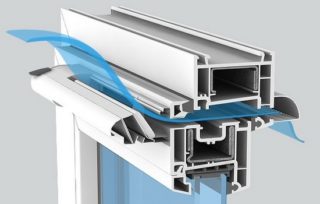
By the way of inflow, there are:
- Recessed ventilators - they are installed in the frame by cutting a hole. The glass unit is not dismantled during installation. The insulating properties of the window structure are preserved, the installation does not cause any particular difficulties. However, folding devices have low productivity - no more than 5 m3 / h.It is recommended to install them in small rooms or two ventilators per window at once. Some models are automated.
- Slotted air inlets - consist of one or two blocks. The length of the slot is from 17 to 40 cm, the width is from 12 to 16 mm, which ensures a sufficient inflow volume of about 20 m3 / h. To install two-block models, you will need to mill the window frame. A simple slot-type inlet valve is installed in place of the seal part. The inlet cover protects against insects, dust, rainwater entering the house. An adjustment system is provided inside the room.
- Surface mounted ventilators have the highest performance compared to other window supply valves. They can even be installed in blind window frames. However, the installation is carried out before installing the glass unit, or it will have to be changed. In addition, overhead models are not suitable for residential applications, because they significantly reduce thermal and sound insulation.
The regulation of the intensity of air exchange is carried out mechanically or automatically.
Installation on plastic windows
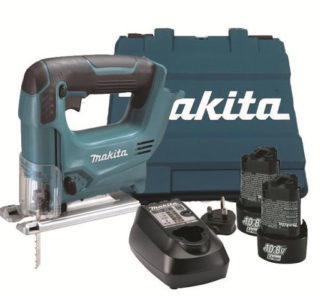
A folded ventilator is installed in the upper part of the window; it is best to choose a warm season for this. To mill the frame, you will need electrical equipment and other tools:
- jigsaw;
- electric drill with drills with a diameter of 5 and 10 mm;
- plywood or hardboard template;
- fine-grained file;
- silicone sealant.
At the preparatory stage, the sash is removed, installed in an inclined or vertical position, fittings and striking plates that will interfere with milling are removed.
Installation step by step:
- Marking is done by putting the template on a vertical ledge.
- With a drill with a diameter of 10 mm, several holes are drilled in a row at some distance from each other.
- Holes are connected with a jigsaw.
- The procedure is repeated on the overlapping of the frame.
- The opened window chambers are filled with sealant.
- Treat the mounting strip with a sealant from the back and apply it to the sash. Fix it with self-tapping screws.
- The indoor unit is fixed to the bar with latches.
- The outer visor is attached with self-tapping screws. The joints are treated with a sealant.
- The window fittings and the sash are mounted back.
Drilling and sawing must be done carefully so as not to damage the window.
The valve, which does not require milling, is even easier to install. Tools required:
- centimeter;
- construction knife;
- a screwdriver or its electrical counterpart - a screwdriver.
The supply valve package of this model includes:
- set of sealing tapes;
- stubs;
- self-tapping screws;
- directly the valve itself.
If the flap is wide enough, the valve is placed in the middle. If it is narrow, they are shifted to the left or right so that the window fittings do not interfere.
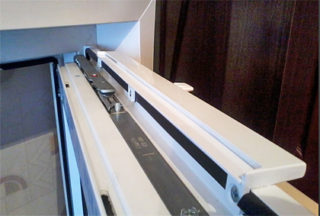
Installation of a valve for supply ventilation on a window is performed as follows:
- Mark the installation site. Notches are made at the extreme points and the sealing tape is removed.
- In the freed groove, fixing dowels are installed: at the edges - two, in the center - one.
- Remove the protective strip from the adhesive tape and glue the flap.
- Fix the device to the window profile with self-tapping screws, screwing them into the dowels.
- The tape on the frame is changed to a narrower one from the set.
After installation, adjustments are made by changing the position of the slider to the left or right. The right position increases the air flow, the left position decreases it.
After installing the ventilator, ventilation in the apartment should improve. If this has not happened, there are more serious problems.
Adjustment and operation
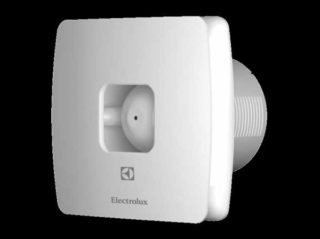
The inlet performance depends not only on the channel cross-section and the pressure difference. Optimum indicators are 20-35 m3 / h at a static pressure of 10 Pa.In the technical documentation supplied with the ventilator, the capacity is indicated taking into account the standard pressure difference. Characteristics in terms of sound insulation indicators should correspond to those of a metal-plastic window. 30-35 dB is the preferred range. In this case, the sound insulation will not be affected after the valve is installed. Ventilators with thermal break show themselves best in the conditions of the domestic climate.
Adjustment of the supply air volume is not provided for all models of ventilation valves. Where possible, tuning can be automatic or manual. In the simplest devices, the ventilation intensity is not regulated in any way.
An automatic valve works according to one of two principles:
- The air supply is stabilized by the difference between street and internal pressure. A predetermined inflow range is preset and this volume is maintained automatically.
- A polyamide sensor is used. With its help, the cross section of the valve is regulated: it increases with excessive moisture values and decreases when the indicators are normal.
Automatic devices are more expensive than mechanical ones; ventilation blocking is available only in some models.
With manual setting, ventilation is carried out at the request of the owner and at the intensity that he chooses. The disadvantages are that mechanical devices require constant monitoring and there is a risk of overcooling the room and creating drafts. Typically, the leftmost position of the knob indicates a fully open vent; the far right indicates that the vent is closed.
Features of operation of supply valves:
- Do not close the valve completely in cold weather. If necessary, the outer gap must be partially covered in order to reduce the air intake.
- Twice a year the outer visor is cleaned with a vacuum cleaner and the body is wiped with a damp cloth.
- Do not use aggressive chemicals for cleaning.
- The air filters should be changed periodically.
- During repair work, the valve is protected from dust.
For residential premises, it is better to choose devices that allow you to control the intensity of air exchange and completely block it.
Review of the best manufacturers
The supply valve models are produced in different countries and are presented in technical and color variations.
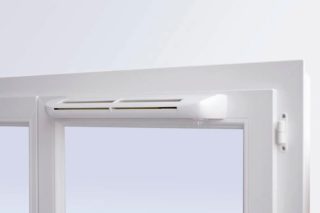
Aereco - manufacturer of ventilation valves for plastic windows from France. The assortment includes products with increased sound insulation (EHA2 series). There are valves in the line with a V8 sensor, which automatically regulates the air flow taking into account the humidity level. The color of the valve can be matched to the shade of the window. The ventilators are available in gray and white, teak and beech. Models are especially popular:
- ЕНА2 - plastic devices with a capacity of up to 35 m3 / h. There are three varieties with different bandwidths. Sound insulation at the level of 37 dB.
- EMM - characterized by a movable outdoor unit.
- EMF - with mechanical regulator.
Air-Box - a domestic manufacturer that produces mechanical valves made of plastic. There is no humidity level sensor in them, but its absence is compensated for by the ease of installation and attractive cost. The outdoor unit is also missing. The inlet is fixed to the frame sash from the inside.
The lineup is represented by the following series:
- Standart. No milling required. The performance is small - 4.8 m3 / h. Sound insulation level - 32 dB.
- Comfort. Installed with and without milling. When installing in the first way, the capacity increases to 42 m3 / h against 31 m3 / h. Can be installed on any sash.
- Comfort S. The productivity of the device is from 40 to 42 m3 / h. Installation is carried out with milling. The main difference is the two-way flow direction, which increases the ventilation efficiency.
Rehau - one of the most famous manufacturers, which has proven itself from the best side. It produces several series of products, each of which is designed for premises for various purposes:
- Aerovent + - for city apartments. The dampers are characterized by simple assembly and sufficient air exchange.
- AR75 is a line for country houses and spacious apartments. The dampers are designed to ventilate several rooms, provided that the glass unit is replaced, they are installed in the finished window. Thanks to the multi-stage control system, the maximum supply volume is up to 113 m3 / h.
- Invisivent - for large public spaces. The supply air volume reaches 300 m3 / h, while the valves are distinguished by improved sound insulation and easy maintenance.
Renson - a Belgian manufacturer producing slotted aluminum ventilators. The Aerovent model stands out, which has a capacity of 21 m3 / h (for a difference of external and internal pressure of 10 Pa). Noise isolation is at least 42 dB. A protective mesh and filter are provided.
High-quality and diverse products are manufactured by companies: Helios, Siegenia, Mabitek... They deserve the trust of buyers.
Supply valves are a technological and convenient replacement for ventilation. They are installed where children are, because they protect from drafts and cold air creeping along the floor. Ventilation valves work as ventilators, not as air conditioning systems, so specialized equipment is not replaced.

